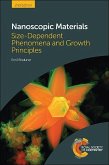CO2-responsive materials are a relatively recent innovation. In general, stimuli-responsive materials exhibit reversible changes in their physical or chemical properties in response to external triggers such as temperature, pH, light, or voltage. However, there are often limitations in applying these triggers including economic and environmental costs, and product contamination. The realization that CO2 can be used as an effective trigger for stimulating changes in material properties has prompted a surge in interest in this area within the past few years, with numerous new studies currently underway in several countries. CO2 is an ideal trigger for switchable or stimuli-responsive materials because it is benign, inexpensive, green, abundant, and does not accumulate in the system. Many different CO2-responsive materials including polymers, latexes, solvents, solutes, gels, surfactants, and catalysts have been prepared. Summarizing recent progress in the preparation, self-assembly, and functional applications of CO2-responsive materials, this book explores the physical chemistry of CO2-switching, including constraints on structural design and process conditions, together with applications. With emphasis on the environmental, health, and safety advantages and disadvantages compared to conventional materials, it is ideal for researchers and industrialists working in green chemistry, chemical engineering, and polymer chemistry.
Hinweis: Dieser Artikel kann nur an eine deutsche Lieferadresse ausgeliefert werden.
Hinweis: Dieser Artikel kann nur an eine deutsche Lieferadresse ausgeliefert werden.








